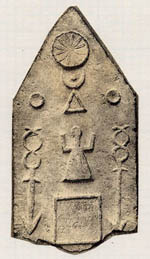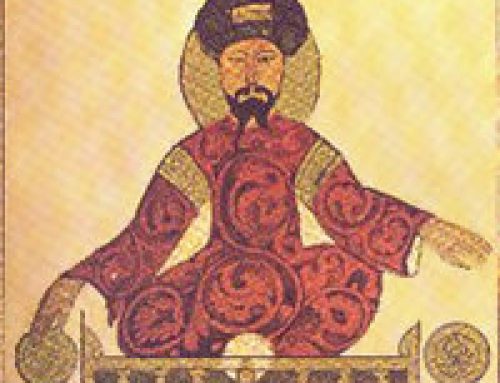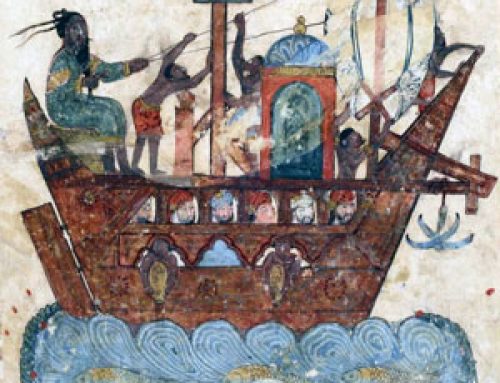A Phoenician moon goddess

The goddess Tanit was a goddess of the moon
The goddess Tanit came to Africa from her home in West Asia with the Phoenicians, about 800 BC. They worshipped her at home (in what is now Lebanon) and they brought her with them and worshipped her in their new colony at Carthage, in North Africa, too.
Originally, Tanit was a moon goddess, maybe the same as Ishtar or Astarte. Once she reached Africa, she also seems to have absorbed an older Berber goddess who may have been kind of the same. Artists sometimes drew or carved Tanit as a woman, and sometimes simplified her into a triangle (representing her dress) with a circle on top (representing her head) and a line across (representing her arms).
Tanit’s husband Baal
 People thought of Tanit as being married to another Phoenician god, Baal. Tanit’s symbol appears on gravestones and temples all over North Africa, and on Carthaginian coins. People worshipped Tanit in North Africa not just during the Carthaginian period but all through the Roman Empire too.
People thought of Tanit as being married to another Phoenician god, Baal. Tanit’s symbol appears on gravestones and temples all over North Africa, and on Carthaginian coins. People worshipped Tanit in North Africa not just during the Carthaginian period but all through the Roman Empire too.Learn by doing: eclipse of the moon
More about Astarte
Bibliography and further reading about Tanit:
The Phoenicians, by Elsa Marston (2001). For teenagers.
The Phoenicians and the West : Politics, Colonies and Trade, by Maria Eugenia Aubet (2nd edition 2001).
The Sanctuary Of Tanit At Carthage In The Roman Period: A Re-interpretation (Journal of Roman Archaeology Supplementary Series), by Henry Hurst and others.
The Atlas of Islam: People, Daily Life and Traditions, by Neil Morris, Manuela Cappon, Gian Paulo Faleschini, Studio Stalio (2003)




